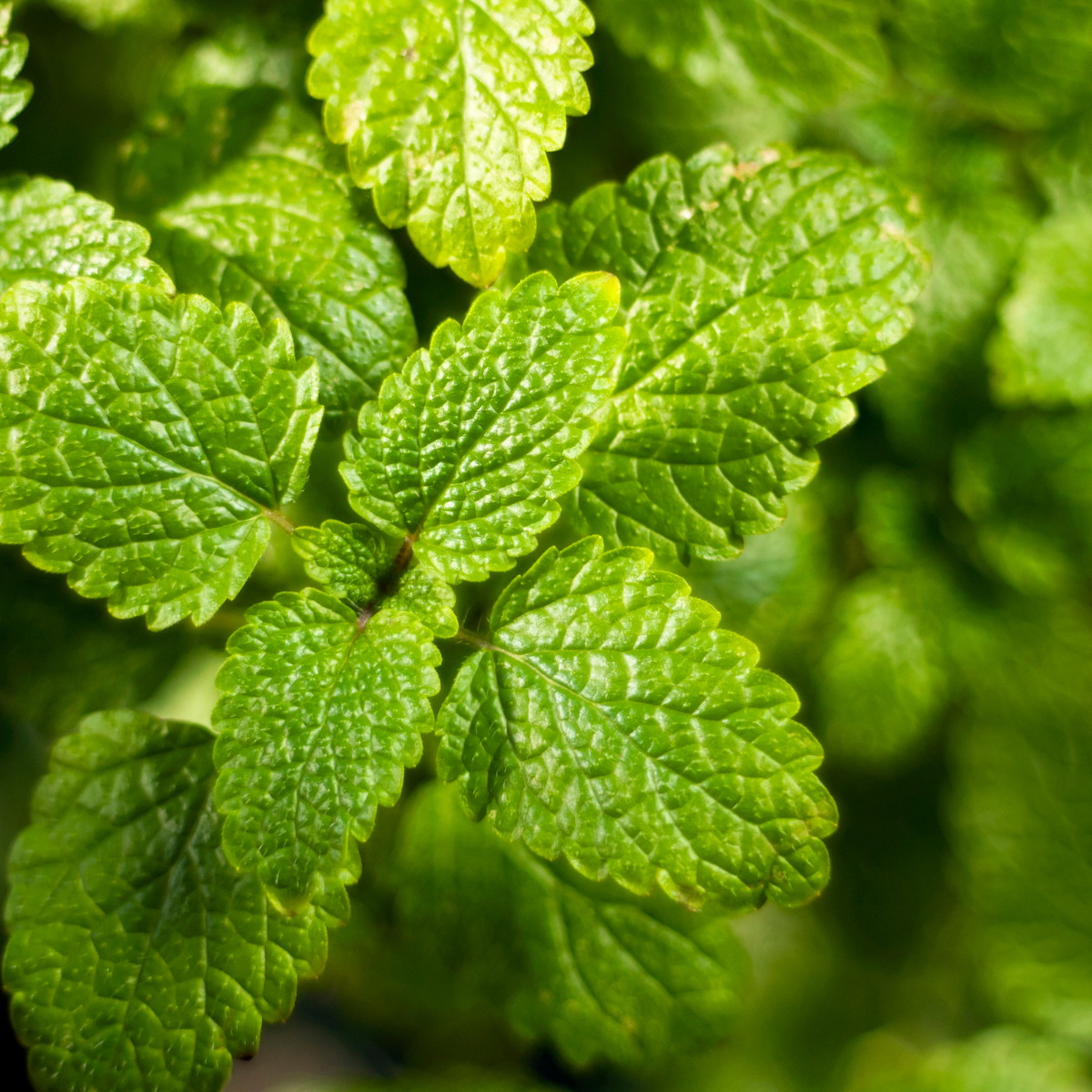A to Z of French Herbs - Lemon Balm - La Mélisse
Have you heard of Chartreuse, Benedictine, Carmelite or Eau des Carmes as it’s also called? These lesser-known liqueur all have a prominent ingredient. It's often enjoyed as a digestive or apéritif and is made using a recipe that has historical ties to the Carmelite monks. All three of these liquors have something in common. Do you know what that is?
Lemon Balm in French is pronounced Mélisse and is a perennial herbaceous plant part of the Lamiaceae or mint family. Its botanical name is Melissa Oficinalis. The officinalis comes from Latin and means of the shop. This comes from the use of the herb by apothecaries who sold herbal remedies.
Other names for lemon balm include balm mint, blue balm, garden balm, honey plant, and sweet balm. Incorrectly sometimes it’s referred to as lemongrass but lemon balm is not related to or looks like lemongrass at all. In France, it can also be called Baume Melisse.
Native to south Central Europe, particularly the Mediterranean Basin, Iran, and parts of Central Asia. Now you can find it around the world. Some of the main producers of Lemon Balm commercially are Hungry, Egypt, and Italy. Ireland is also one of the main producers of Lemon Balm Oil.
It’s a bushy plant that grows to around 1 metre high and has small white flowers that are full of nectar. The plants live for ten years but as a commercial crop, they are usually replaced every five years to help the ground rejuvenate itself. It grows fairly easily from seed and does well in moist rich soil.
The use of Lemon Balm can be dated back as far as 2000 years with recorded use by the Greeks and Romans. Greek polymath Theophrastus referred to it as bee-leaf. Specifically in ancient times, lemon balm was cultivated to feed bees. It would be used to bait new bee swarms.
It was formally introduced to Europe in the 7th century and there were many notes on its usage throughout the Middle Ages by herbalists, writers, philosophers, and scientists.
Prince Llewellyn who was the actual last prince of Wales was said to have drunk lemon balm tea every day of his life and he lived until the fabulous ripe old age of 108.
The tudors used to scatter lemon balm leaves across their floors apparently. No reason was given for why. I suppose they just fancied the idea of leaves tossed around their houses. In 1696 the London dispensary told its readers that an essence of balm given in canary wine every morning would renew youth, strengthen the brain, relieve languishing nature, and prevent baldness. This is the second herb in a row now that has hair loss prevention qualities that I’ve obviously learned too late.
Its leaves have a mild lemon scent and are used as a herb or in teas to flavor them. Especially peppermint teas as it’s often added to them. Many people grow them as ornamental plants and often used to attract bees to the garden.
Lemon Balm contains chemicals that have a sedative and calming effect and can also reduce the growth of some viruses and bacteria. People also use lemon balm for cold sores, anxiety, stress, insomnia, indigestion, and many other conditions some even say it can be used to help treat dementia. It also has a compound called rosmarinic acid that has antimicrobial and antioxidant properties.
Lemon balm essential oil is often used as an ingredient in perfume and can even be found in some toothpaste. It’s even an ingredient in furniture polish manufacturing.
In 2007 the International Herb Association made lemon balm the 2007 herb of the year.
Carmelite water or eau des carmes or Eau de Mélisse is a distilled alcoholic digestif tonic in France that contains lemon balm, lemon peel, nutmeg, and Angelica which we mentioned in the first episodes of this A to Z of the French herb series.
The drink was made by the Carmelite nuns who were a Roman Catholic religious order from the Abbey St Juste in the 14th century. Each convent, each religious order, had at the time, its own water, or elixir, whose recipe was kept secret, such as that of the Chartreuse, and this water of the Carmelites.
A parchment written in 1715 by Brother Joachim de St Jacques, Carme of the Convent of Place Maubert, includes the real recipe for lemon balm water: this recipe was kept secret, only transmissible to a Carmelous brother, under promise. The parchment they said came from the Holy Land.
In the court of Louis 14th the sun king, ladies of the court who had so-called nervous discomfort would drink the eau de melisse.
Lemon balm can also be found in French liquors Benedictine and Chartreuse.
Persian writer and thinker Avicenna once wrote about Lemon Balm
“Maketh the heart merry and joyful”



